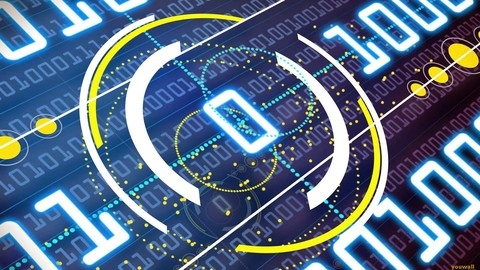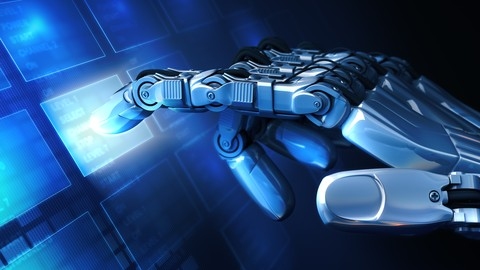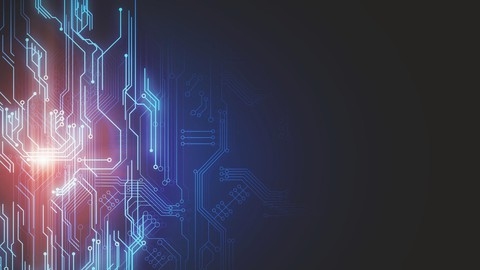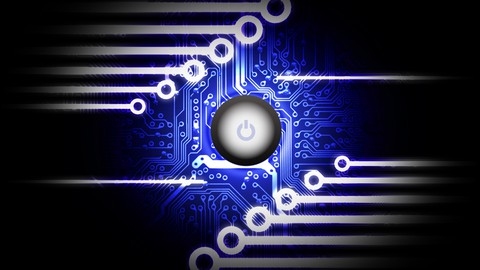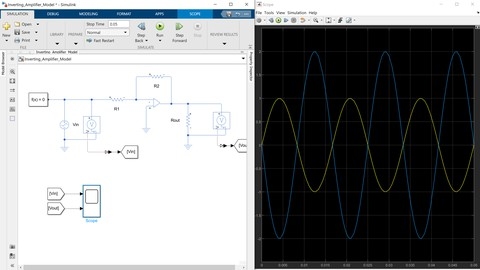Digital electronics is the foundation of modern technology, underpinning everything from smartphones and computers to advanced robotics and medical devices.
Understanding the principles of digital logic, circuits, and microcontrollers is crucial for anyone interested in a career in electronics, computer science, or related fields.
By learning digital electronics, you can gain the skills to design, build, and troubleshoot complex systems, opening doors to a wide range of exciting opportunities.
Finding the right digital electronics course on Udemy can be overwhelming, given the vast number of options available.
You’re looking for a course that not only covers the theoretical concepts but also provides practical, hands-on experience, enabling you to apply your knowledge to real-world projects.
The ideal course will be taught by an experienced instructor who can explain complex topics in a clear and engaging manner.
For the best digital electronics course overall on Udemy, we recommend the Digital Electronics: Robotics, learn by building module II course.
This comprehensive course takes a hands-on, project-based approach, guiding you through the fundamentals of digital electronics and microcontrollers while building and programming your own robot.
You’ll gain practical experience with PIC and Arduino microcontrollers, sensors, and actuators, solidifying your understanding of key concepts.
While the Digital Electronics: Robotics, learn by building module II is our top pick, there are many other excellent digital electronics courses available on Udemy, catering to different learning styles and specific areas of interest.
Keep reading to discover our curated list of recommendations and find the perfect course to jumpstart your journey into the fascinating world of digital electronics.
Digital Electronics: Robotics, learn by building module II
The course covers the fundamentals of digital electronics and microcontrollers, with a hands-on approach to learning by building circuits and programming microcontrollers.
You will start by understanding the basics of digital electronics, including binary, logic gates, and memory.
The course then dives into programming microcontrollers, specifically the PIC microcontroller from Microchip and the Arduino.
With the PIC microcontroller, you will learn how to set up the development environment, write your first program, and troubleshoot issues.
The course covers important concepts like variables, registers, and addressing.
You will also learn how to interface the PIC with LCD displays and perform analog-to-digital conversion.
The second half of the course focuses on the Arduino microcontroller.
You will learn how to set up the Arduino IDE, write programs, and control various components like LEDs, motors, and servos.
The course covers essential programming concepts like loops, conditional statements, and functions.
You will also learn how to use libraries, communicate serially, and read analog inputs.
Towards the end, the course guides you through building a mobile robot using the components provided.
You will program the robot to perform tasks like obstacle avoidance, line following, and dance moves using infrared and ultrasonic sensors.
Throughout the course, you will gain hands-on experience with digital electronics, microcontrollers, and programming.
You will build circuits, write code, and create practical projects, making it an engaging way to learn digital electronics by doing.
Digital Electronics & Logic Design
You’ll embark on a journey starting with the basics of number systems, including binary, decimal, octal, and hexadecimal, learning to seamlessly convert between them.
This is essential for understanding how data is represented and manipulated within computers.
The course then delves into the fascinating world of binary arithmetic, equipping you with the skills to perform binary addition, subtraction, multiplication, and division.
This hands-on experience allows you to grasp the fundamental operations that computers execute.
Next, you’ll explore the building blocks of digital circuits: digital logic gates.
You’ll gain a comprehensive understanding of gates like AND, OR, NOT, NAND, NOR, XOR, and XNOR, and how their combinations create more complex circuits.
The syllabus further emphasizes Boolean algebra, a powerful tool for simplifying logic circuits.
You’ll learn about essential properties such as associativity, commutativity, distributivity, and DeMorgan’s Law, equipping you to design efficient circuits.
Boolean expressions, mathematical representations of logic circuits, are covered in depth, along with methods like Karnaugh maps for simplifying these expressions.
This practical knowledge allows you to optimize circuit design and create more efficient and effective systems.
The syllabus concludes with advanced topics including sequential circuits, memories, and processor architecture.
You’ll learn about flip-flops, various types of memory, and how these components work in concert to create a complete computer system.
This syllabus is well-structured, progressing from basic concepts to more advanced topics.
The inclusion of practical examples and exercises throughout helps solidify your understanding and reinforces the theoretical concepts.
Crash Course Digital Electronics
This “Crash Course Digital Electronics” covers a broad spectrum of topics, providing a solid foundation in the fundamentals of digital electronics and extending into practical applications of microcontrollers and operating systems.
You’ll begin by understanding the core concepts of binary representation and logic gates, gaining the ability to analyze and design simple digital circuits.
The syllabus then progressively builds upon these fundamentals, introducing you to the architecture and operation of CPUs and the role of registers, memory, and cache.
You’ll develop a strong understanding of how CPUs function and the importance of efficient memory management.
The course then delves into the world of microcontrollers, equipping you with the knowledge to program these tiny embedded computers to control devices.
You’ll gain hands-on experience with popular microcontroller architectures and learn to use C programming to interact with peripherals like analog-to-digital converters (ADCs) and serial communication interfaces.
The final portion of the syllabus touches upon the essential role of operating systems in managing a computer’s resources.
You’ll gain insights into the functions and structure of operating systems, understanding their crucial role in managing memory, interacting with devices, and supporting multitasking.
The syllabus effectively guides you through a comprehensive journey in digital electronics, providing a balanced mix of theoretical concepts and practical applications.
Digital Electronics - Complete Course (73+ Hours)
This comprehensive course on digital electronics provides a solid foundation in the fundamental concepts and applications of digital circuits.
You’ll begin by delving into the building blocks of digital systems: logic gates.
You’ll learn how to manipulate and combine AND, OR, and NOT gates to create more complex circuits, and you’ll discover the powerful tool of Boolean algebra, which allows you to analyze and simplify these circuits efficiently.
You’ll then explore different number systems used in digital electronics, including binary, decimal, octal, and hexadecimal, and learn how to perform arithmetic operations in these systems.
This knowledge will be essential for understanding how digital circuits process and manipulate data.
The course then progresses to the design and analysis of combinational circuits, which are circuits whose output is determined solely by their current input.
You’ll learn to design circuits like half adders, full adders, half subtractors, full subtractors, binary adders, and binary subtractors, which are the core components of many digital systems.
You’ll also delve into code converters, which are essential for converting between different coding schemes used in digital systems.
The second half of the course explores sequential circuits, which have memory and can store information.
This section covers flip-flops, the fundamental building blocks of memory, and registers, which are collections of flip-flops.
You’ll learn about different types of flip-flops, including SR, JK, D, and T, and how to use them in various applications.
You’ll also delve into counters and sequence generators, crucial components for creating timing circuits and generating complex sequences.
The course concludes with a look at programmable logic devices (PLDs), allowing you to create custom circuits using pre-defined building blocks.
You’ll also explore analog to digital and digital to analog converters (ADCs and DACs), essential for converting between analog and digital signals.
The course also provides an introduction to logic families, the various ways to implement logic circuits using transistors.
Finally, you’ll gain a comprehensive understanding of semiconductor memories, including SRAM, DRAM, ROM, PROM, EPROM, EEPROM, and flash memory.
This course offers a thorough introduction to the world of digital electronics, providing you with the skills and knowledge necessary to design, analyze, and implement digital circuits across various applications.
Digital Electronics
This course lays out a comprehensive introduction to the world of digital electronics, starting with the fundamental building blocks and progressively moving towards practical applications.
You’ll begin with a solid grounding in binary arithmetic, the language of computers, learning how to represent numbers using binary codes and understanding the importance of error detection and correction techniques.
The course then dives into the fascinating world of Boolean Algebra, which provides the mathematical foundation for designing and analyzing digital circuits.
You’ll learn how to represent logical operations using Boolean expressions and translate them into practical circuits.
This section is key for understanding how logic gates like AND, OR, and NOT operate and how they are combined to create more complex functions.
You’ll then progress into the design and analysis of Combinational Circuits, which form the building blocks of many digital systems.
The syllabus introduces you to different types of combinational circuits, such as adders, subtractors, and decoders, and explains their real-world applications.
Examples like parallel adders, magnitude comparators, and multiplexers will give you a strong grasp of their operation.
Finally, the course introduces programmable logic devices, giving you the ability to create custom logic functions.
You’ll learn about programmable logic arrays (PLAs) and programmable array logic (PALs), essential tools for designing and implementing complex digital systems efficiently.
This syllabus provides a well-structured roadmap for navigating the world of digital electronics.
Digital Electronics and Circuits
If you’re looking to dive into the world of digital electronics, this course provides a comprehensive overview of the key concepts and practical applications you’ll need to master.
You’ll start with the foundations – understanding different number systems and delving into the fascinating world of Boolean algebra, the bedrock of digital circuit design.
The syllabus then moves onto crucial logic gates, such as NAND, NOR, and XOR, and guides you through building circuits for a variety of functions.
This course won’t just teach you about adders and subtractors, but also how to design and analyze sequential circuits using flip-flops and registers.
You’ll explore Mealy and Moore machines, models that help understand the behavior of sequential circuits, and gain hands-on experience with designing circuits that recognize patterns in data.
The syllabus emphasizes practical application throughout, challenging you to solve design problems using multiplexers, flip-flops, and sequential circuits.
This ensures you’ll graduate with the skills needed to tackle real-world engineering challenges.
MATLAB/Simulink for Analog and Digital Electronics
If you’re looking to master the fundamentals of analog and digital electronics while gaining proficiency in MATLAB/Simulink, this course offers a comprehensive approach.
It guides you through the essential building blocks of electronics, starting with passive components like resistors and capacitors, and then moving on to active components such as transistors and op-amps.
You’ll gain hands-on experience using Simulink, a powerful graphical programming environment, to build models of circuits and conduct simulations.
The course delves into the simulation of various analog circuits, including inverting and non-inverting amplifiers, as well as low-pass, high-pass, and band-pass filters.
You’ll get practical experience by tackling projects like designing an audio equalizer and a full-wave rectifier, applying your newfound skills to real-world applications.
Moving into the digital realm, you’ll explore the intricacies of analog-to-digital converters (ADCs), like the popular Successive Approximation ADC, and digital-to-analog converters (DACs).
You’ll then delve into the fascinating world of logic gates, combining them to create complex combinational circuits, such as a 3-1s pattern detector.
The course culminates with sequential circuits, where you’ll work with latches, flip-flops, and seal-ins to build a practical garage door opener.
The project-based approach allows you to apply your learning directly, solidifying your understanding of digital electronics principles.
This course provides a solid foundation for anyone seeking to understand the fundamentals of analog and digital electronics while learning the powerful simulation capabilities of MATLAB/Simulink.
The syllabus covers a broad range of topics, from basic components to complex circuits, and the project-based approach ensures you gain practical skills alongside theoretical knowledge.
Digital Electronics Made Easy - Boolean Algebra till FSMs
Starting with the fundamentals of Boolean algebra, you’ll learn to manipulate logic expressions and simplify them using K-maps, a powerful tool for designing efficient circuits.
You’ll gain proficiency in different number systems, including binary and hexadecimal, crucial for representing and manipulating data within digital systems.
The course then dives into designing digital circuits, starting with adders and subtractors, the building blocks of many complex systems.
You’ll learn how to design a circuit that can add two 8-bit binary numbers, for example.
You’ll also master the use of timing diagrams, which help visualize how signals change over time in a circuit, essential for understanding circuit behavior and debugging potential issues.
As you progress, you’ll explore sequential circuits, the heart of many digital systems.
You’ll learn about latches and flip-flops, which act as memory elements, allowing circuits to store and manipulate data.
You’ll design counters, circuits that keep track of events, and learn about finite state machines (FSMs), powerful machines that can perform complex tasks by transitioning through different states based on inputs.
You’ll even design an FSM using both Mealy and Moore machines, two common models for implementing FSMs.
